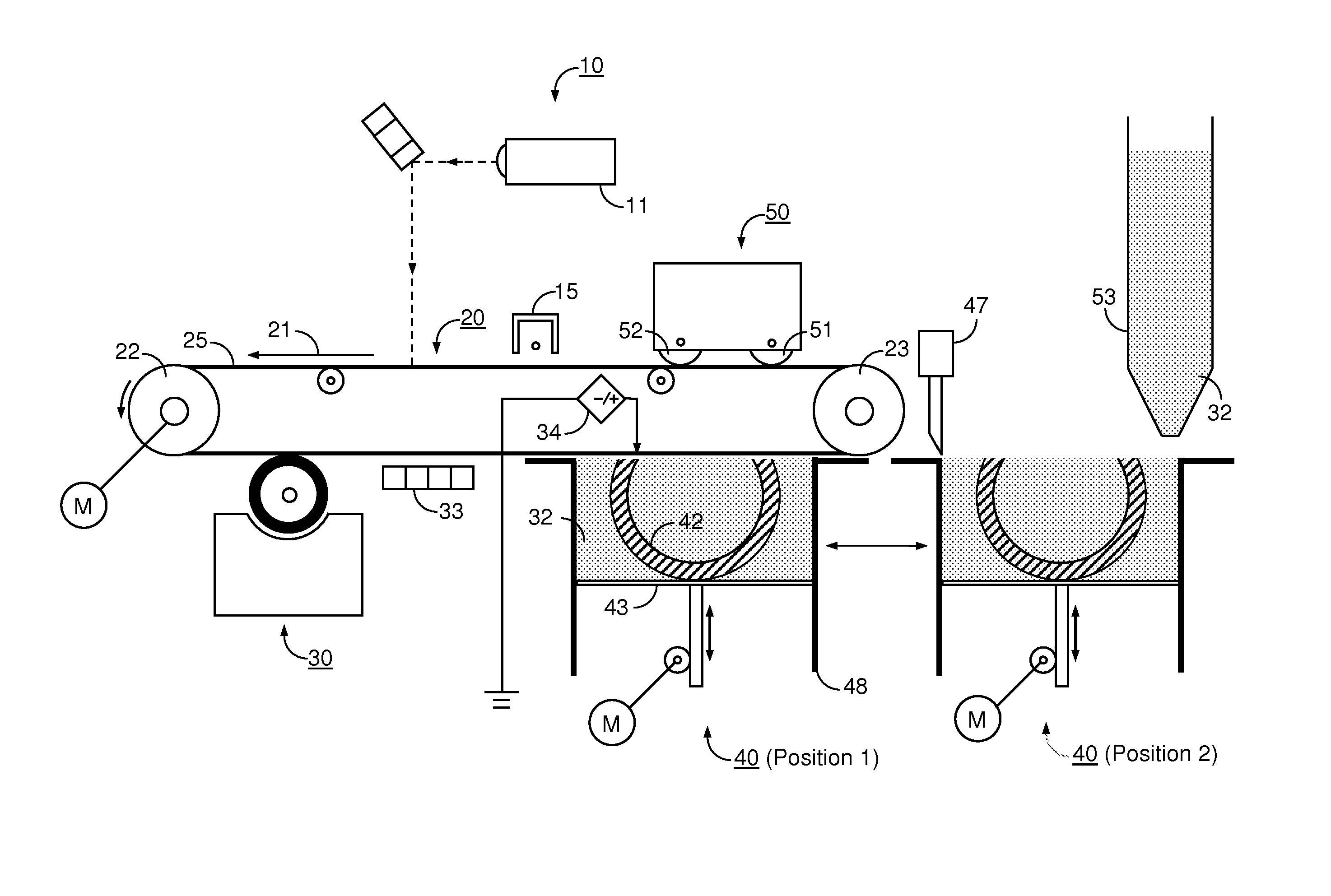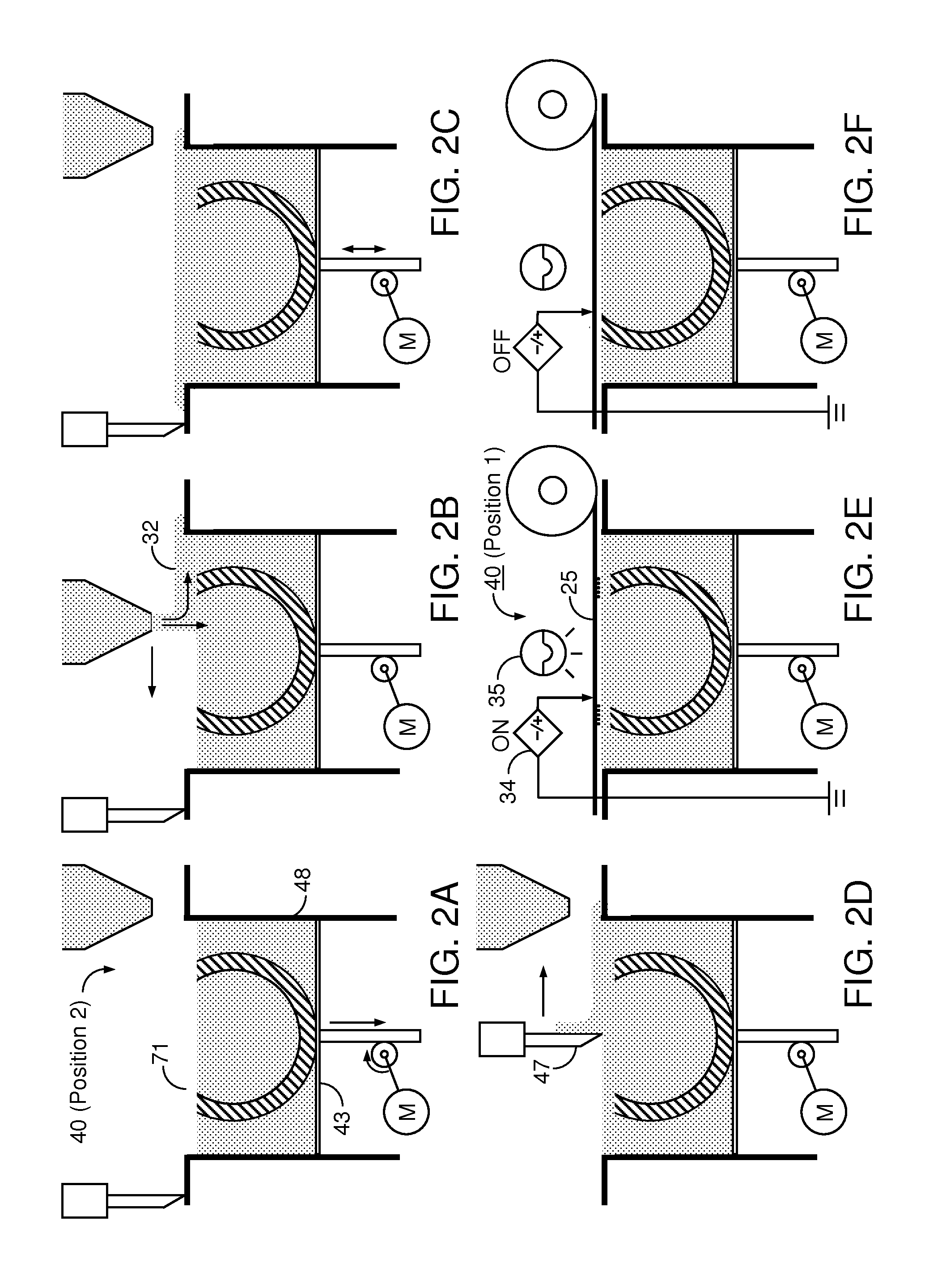Process for building three-dimensional objects
a three-dimensional object and process technology, applied in additive manufacturing, coatings, instruments, etc., can solve the problems of limited amount of body-building material that can be deposited in each layer forming step, and affecting the quality of the finished produ
- Summary
- Abstract
- Description
- Claims
- Application Information
AI Technical Summary
Benefits of technology
Problems solved by technology
Method used
Image
Examples
Embodiment Construction
[0020]These and other aspects of the present invention will become apparent from the following description in conjunction with the accompanying drawings in which
[0021]FIG. 1 is a schematic view of an embodiment of the process of the present invention.
[0022]FIG. 2A-2F are schematic views of different stages of forming a three-dimensional object in accordance with the present invention.
[0023]FIG. 3 is a schematic view of another embodiment of the process of the present invention.
[0024]FIG. 4 is a schematic view of a further embodiment of the process of the present invention.
[0025]In these Figures, like components are indicated by identical reference numerals.
[0026]Illustrated in FIG. 1 is an exemplary embodiment of the present invention which depicts an apparatus for forming three-dimensional objects, while FIG. 2A-2F show views of different stages of the forming process in accordance with the present invention. As shown in FIG. 2A-2D, the substrate 43, supporting the three-dimensiona...
PUM
| Property | Measurement | Unit |
|---|---|---|
| mutual repelling forces | aaaaa | aaaaa |
| insulating | aaaaa | aaaaa |
| force | aaaaa | aaaaa |
Abstract
Description
Claims
Application Information
 Login to View More
Login to View More - R&D
- Intellectual Property
- Life Sciences
- Materials
- Tech Scout
- Unparalleled Data Quality
- Higher Quality Content
- 60% Fewer Hallucinations
Browse by: Latest US Patents, China's latest patents, Technical Efficacy Thesaurus, Application Domain, Technology Topic, Popular Technical Reports.
© 2025 PatSnap. All rights reserved.Legal|Privacy policy|Modern Slavery Act Transparency Statement|Sitemap|About US| Contact US: help@patsnap.com



